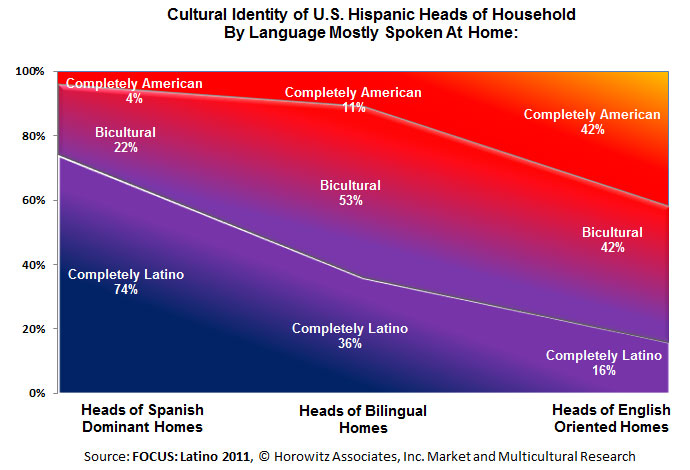For Many Latinos, Biculturalism Is Key
[Editor’s Note: The following is a press release from Horowitz Associates Market and Multicultural Research]
Many U.S. Hispanics feel culturally connected to both their U.S. and Latino identities, according to Horowitz Associates’ annual FOCUS: Latino report.
For the past 11 years, the study has tracked U.S. Hispanics’ attitudes towards and viewing of TV, broadband, and alternative platform content and services. It finds that, when asked to rate on a scale of 1-5 whether they identified themselves as “completely Latino” or “completely American:”
- 18% of Hispanics identify themselves as “completely American”
- 43% as completely Latino
- four in ten (39%) feel they are a mix of both.
These data correlate to acculturation markers like language use in the home. Latinos in bilingual homes are, concomitantly, more likely to be bicultural. Importantly, four in ten Hispanics in English-oriented homes (where mostly/only English is spoken) consider themselves both Latino and American, and a full 16% of those heads of household define themselves as “completely Latino.”
At the same time, bicultural Latinos do not necessarily only live in bilingual homes: Almost one-quarter of bicultural Latino heads of household live in Spanish-dominant homes; one-third live in English-oriented homes.
Understanding how cultural affinity impacts media consumption is increasingly essential for advertisers, marketers, and media companies. FOCUS: Latino finds that Latinos identifying themselves as bicultural spend the majority of their TV viewing time — 72% — with English language TV and 28% with Spanish language programming. Yet Spanish language TV remains important: Four in ten (43%) bicultural Latinos watch TV in Spanish at least every other day. And, programming in English targeted to Latinos is quickly gaining ground, with 20% of biculturals watching at least weekly — a number likely to increase as more of this content becomes available.
“The Hispanic market has always been complex and diverse, with a market for both Spanish and English language media, marketing, and advertising,” notes Adriana Waterston, Horowitz’ VP of Marketing and Business Development. “It has never beenexclusively about language as much as it is about cultural relevance. There is a large and growing opportunity for language-agnostic content and messaging that speaks to the experience of being both American and Latino that will resonate loudly with this bicultural segment.”
[Images Courtesy Horowitz Associates]


